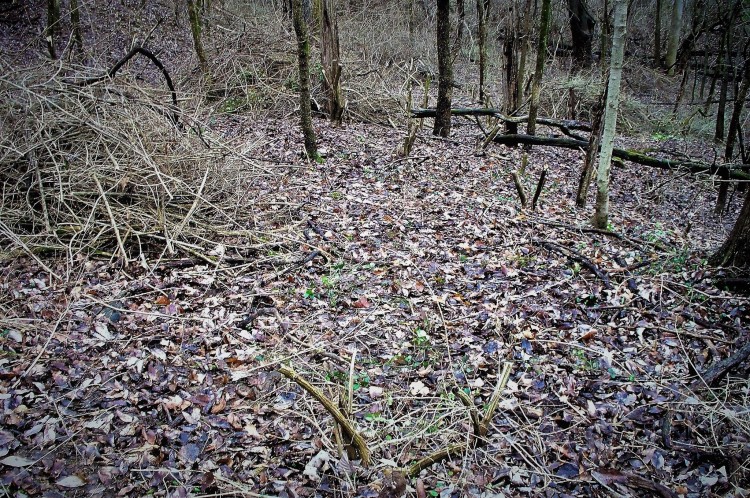We now have a new revival site


Nineteen U of L students, armed with loppers and saws, headed into the woods today to cut things down. We are so grateful – without large groups volunteering on a regular basis, our forest revival efforts would not succeed. So many places in this forest still look like the pics above, of the site where we worked today. Literally nothing can grow under these spreading, dense shade producing shrubs. So step one is to cut them down, treat stumps with herbicide, or come back and cut them again when they grow new leaves.

Back in the day, when I first was learning about invasive plants, we would feel really good after a long workday, with the skeletons of many bush honeysuckles prone on the ground around us. We had done what needed to be done, and good things would surely result.
Now I’m not so sure. We were dreadfully naïve to assume the forest would heal itself because we left a great big gap in the understory. Returning to a worksite in just a couple of years showed a healthy regrowth of invasive plants and nothing else. It’s just not that easy.

Why? Because you can’t get native plants when all the seeds are from honeysuckle, privet and wintercreeper. The seed bank rules, and what’s in it is what comes up next.

Looking at the pics of today’s worksite, there are no young trees or native shrubs. The bright green leaves on the ground belong to the invasive vine wintercreeper. Now that there’s plenty of light, it could go into overdrive and carpet the whole area in a couple years. Then it would climb up the trees to flower and make more seed. Fortunately the deer won’t let it go that far. They were watching while we worked today, eager to get to the nice green stuff we’d uncovered.

So now we’ve started the process of reviving this site – what’s next? It will be featured in future posts under the name “the woodcreek mounds” due to it’s oddly moundy topography. A great future project would be transplanting a quantity of small spicebush plants here, since it’s one of the very few browse-proof native shrubs. Over time, our best hope is the seed bank eventually will be loaded with spicebush seed, instead of what’s there now.
Anonymous
You have people loving the forest by helping the forest. Good day for nature.
LikeLike
oneforestfragment
That ‘s exactly it – love is not passive. Good stewardship of the land, forest revival – is how we can express our love.
Rosemary
LikeLike
Conrad Selle
Woodcreek Mounds is a good name.
________________________________
LikeLike
oneforestfragment
Thank-you! Hope it becomes a sustainable revival site with value to the forest.
Rosemary
LikeLike